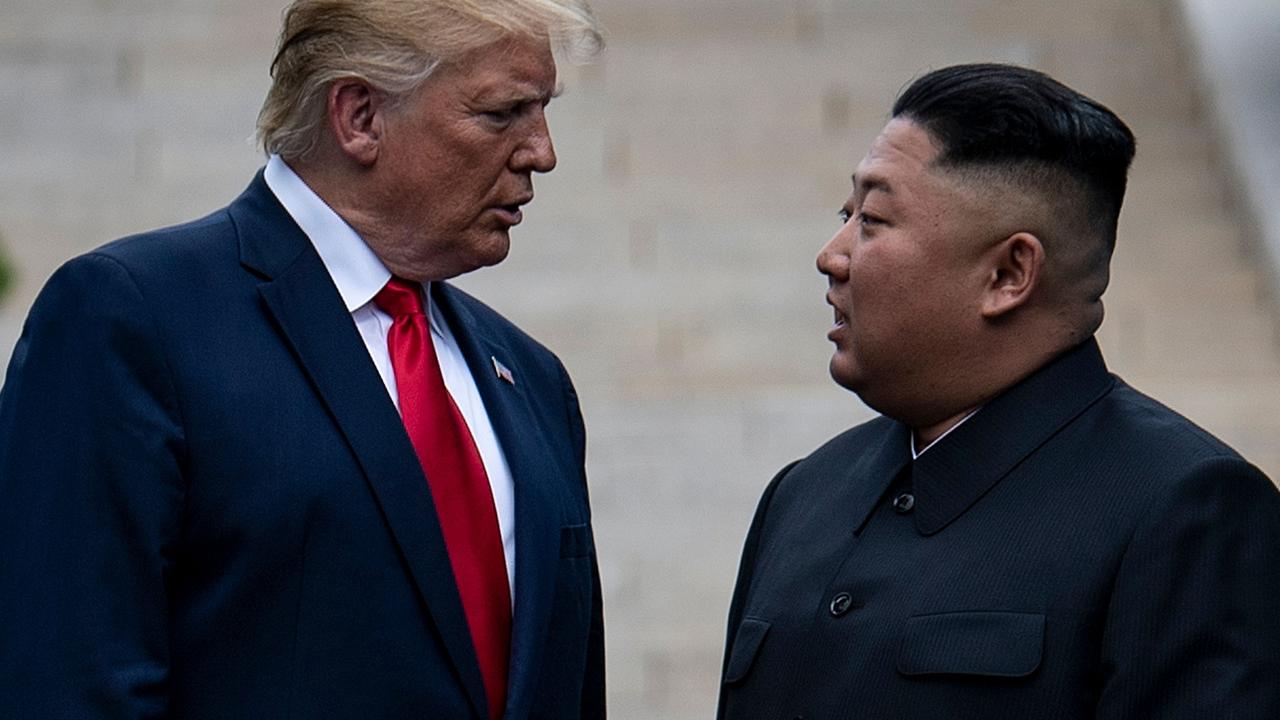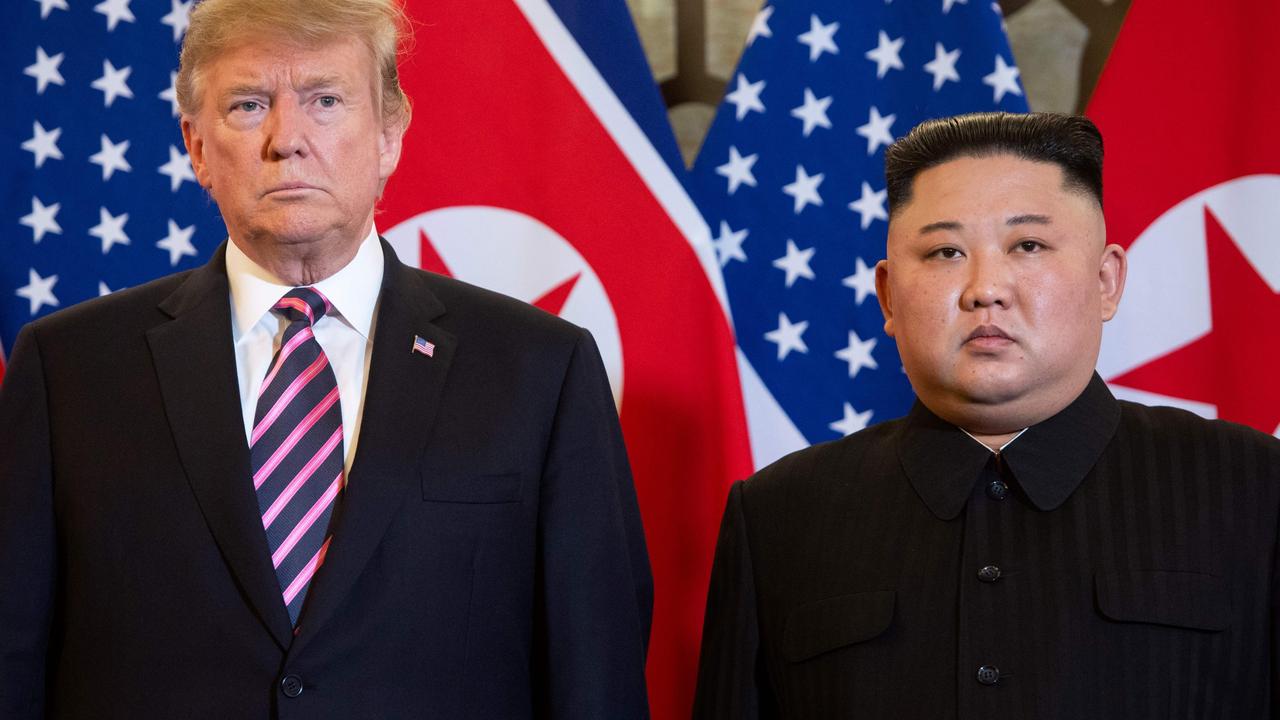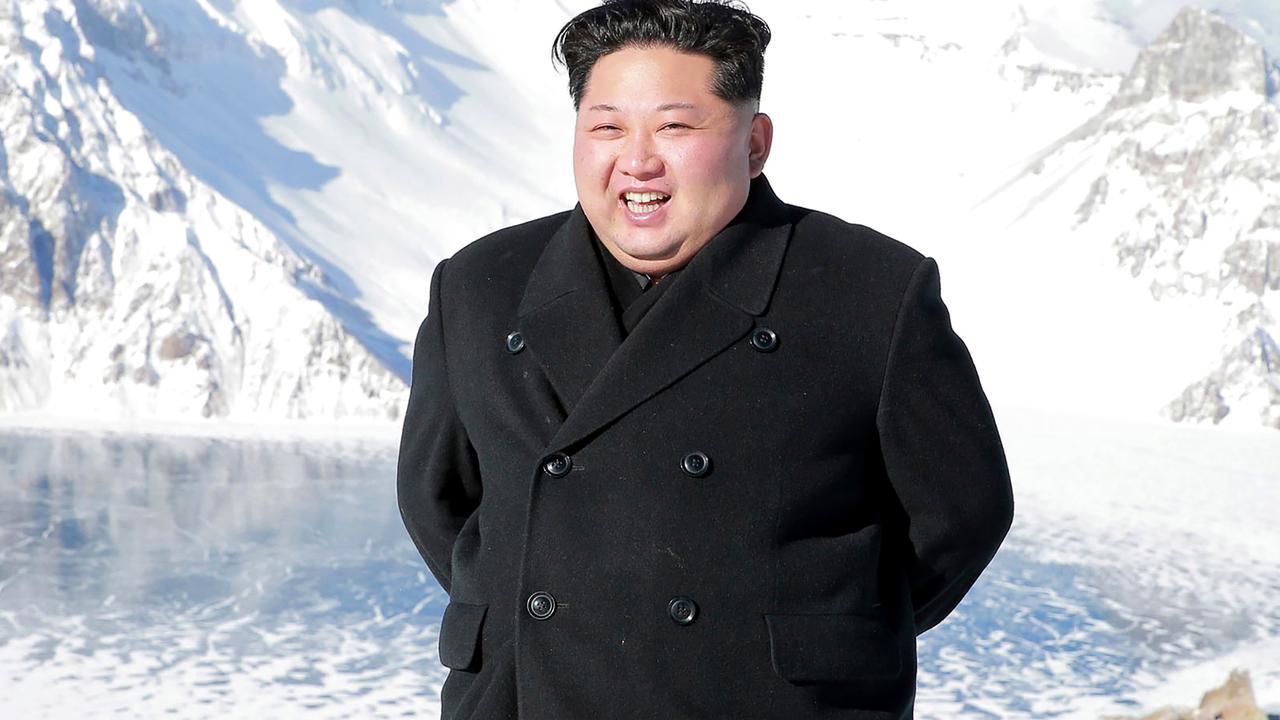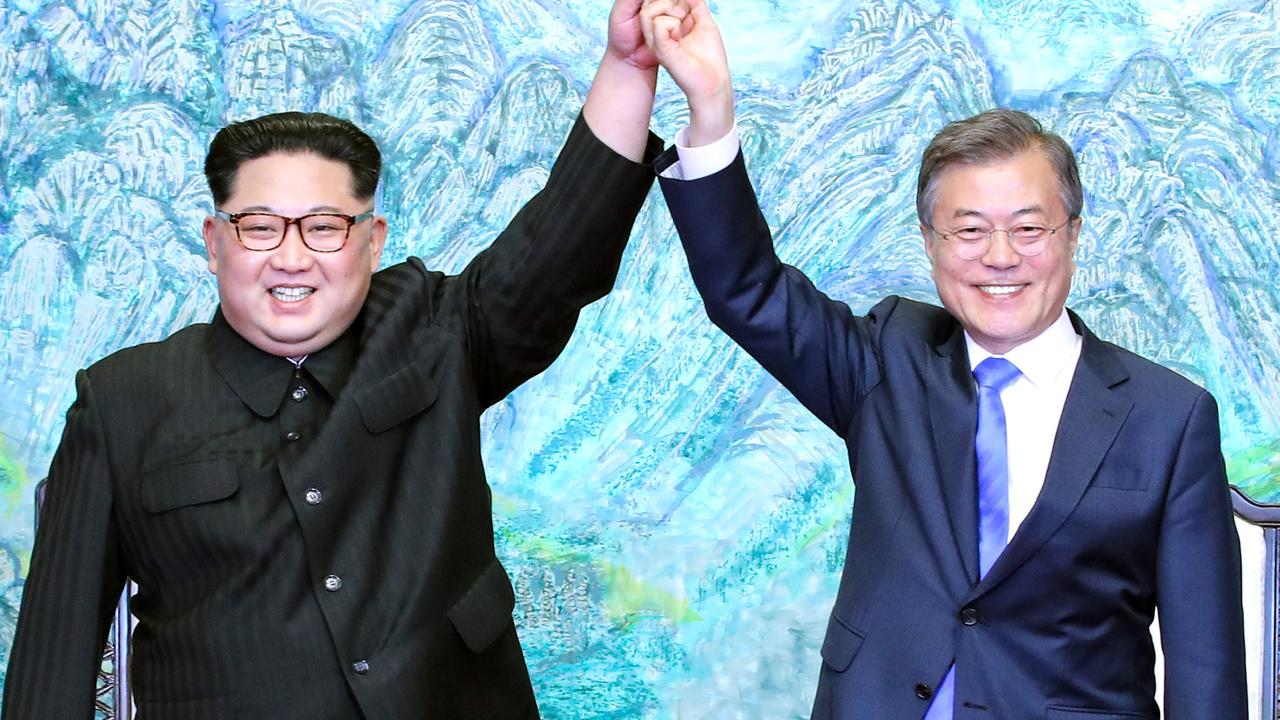Kim Jong-un’s fawning letters to Donald Trump revealed in Bob Woodward book
Donald Trump has revealed that America and North Korea came “much closer” to war than anyone realised in the early days of his presidency.
New details have emerged about the rollercoaster relationship between US President Donald Trump and North Korean dictator Kim Jong-un, including what the pair said to each other behind the scenes as their diplomatic summit in Hanoi fell apart last year.
Veteran political journalist Bob Woodward, who you might remember for his reporting on the Watergate scandal, describes the evolution of the Trump-Kim bromance in unprecedented detail in his new book, Rage.
You might recall that said bromance got off to a rather cantankerous start, with Mr Trump and Kim trading juvenile insults – “dotard”, “little Rocket Man”, et cetera – and increasingly ominous threats.
Well, the book includes the startling revelation that the US and North Korea actually came “much closer” to war than anyone realised in the early days of the Trump administration.
RELATED: Behaviour that ‘shocked’ Trump’s own staff
RELATED: Trump admits he ‘played down’ the coronavirus

Six days into his presidency, Mr Trump met with Matt Pottinger, who is now the White House’s deputy national security adviser, but at the time was head of Asia policy.
The President told Mr Pottinger that his predecessor, Barack Obama, had identified North Korea as the “biggest, most dangerous” problem he would face in office. He asked for advice on how to handle it.
Mr Pottinger thought little of the Obama-era strategy, which in his view, essentially boiled down to the US waiting for the Kim regime to fall apart on its own. He drew up several less passive options for Mr Trump to consider.
In March 2017, the President settled on one of them, described as a policy of “maximum pressure”. According to Woodward, that meant “economic, rhetorical, military, diplomatic and, if necessary, covert action”.
“The campaign was designed to show Kim he was in greater danger and would pay a bigger price with nuclear weapons than he would without them,” he writes.
Meanwhile, Mr Trump’s defence secretary James Mattis considered potential military operations, and plans were quietly drawn up for “covert action to overthrow” Kim, should the President decide to give the order.
Tensions between the US and North Korea rose steadily throughout 2017.
General Mattis slept in his clothes in case he needed to suddenly join a top secret conference call. A flashing light was installed in his home’s bathroom so he would know immediately whenever North Korea launched a missile, even if he was showering.
And privately, the defence secretary struggled with the moral implications of potentially having to order a nuclear strike.
Several inflammatory incidents passed without much notice from the rest of the world, including a simulated attack from the US Air Force on September 25, in which more than 20 planes crossed the Northern Limit Line separating North and South Korea in the sea.
The situation was tense enough that South Korea’s National Security Council sent a message to the US suggesting it might have gone “too far”.
“I understand we really came close to war with North Korea,” Woodward said during one of his 18 interviews with Mr Trump.
“Right. Much closer than anyone would know. Much closer,” the President confirmed.
RELATED: The forgotten abuses of Kim Jong-un’s regime

Of course, things did cool off, and a year later Mr Trump was bragging to a crowd at one of his political rallies about the “beautiful letters” Kim had been sending him.
“I like him. He likes me. I guess that’s OK. Am I allowed to say that?” he said.
“I was being really tough and so was he. And we would go back and forth. And then we fell in love. No, really. He wrote me beautiful letters. They were great letters. And then we fell in love.”
A couple of those letters have already made it into the public eye, but Woodward managed to get his hands on another 25. He describes them as “florid and grandiloquent”.
By mid-2018, shortly after the two leaders’ first diplomatic summit in Singapore, Kim was in full-on flattery mode.
“I feel pleased to have formed good ties with such a powerful and pre-eminent statesman as Your Excellency,” he wrote to Mr Trump on July 30.
“It has been 200 days since the historic summit in Singapore this past June, and the year is now almost coming to an end,” he said on December 25.
“Even now I cannot forget that moment of history when I firmly held Your Excellency’s hand at the beautiful and sacred location as the whole world watched with great interest and hope to relive the honour of that day.
“As I mentioned at that time, I feel very honoured to have established an excellent relationship with a person such as Your Excellency.
“As we enter the new year, the whole world will certainly once again come to see, not so far in the future, another historic meeting between myself and Your Excellency reminiscent of a scene from a fantasy film.”
That second historic meeting happened in February of 2019. Mr Trump went to Hanoi hoping to strike a substantive denuclearisation deal with Kim. But during a two-hour meeting between the pair, it all fell apart.
Woodward writes that Kim offered to dismantle one of his nuclear weapons facilities, Yongbyon Nuclear Scientific Research Centre, but was refusing to budge on four others. Mr Trump was not satisfied.
“Listen, one doesn’t help and two doesn’t help and three doesn’t help and four doesn’t help. Five does help,” Mr Trump told him.
“But it’s our biggest,” Kim protested.
“Yeah. It’s also your oldest. Because I know every one of the sites. I know all of them, better than any of my people I know them. You understand that,” said Mr Trump.
Kim still refused to budge. The President briefly tried another tactic.
“Do you ever do anything other than send rockets up in the air? Let’s go to a movie together. Let’s go play a round of golf,” he suggested.
Still nothing.
“You’re not ready to make a deal. You’re not there,” Mr Trump finally concluded.
“I’ve got to leave. You’re my friend. I think you’re a wonderful guy. But we’ve got to leave, because you’re not ready to make a deal.”
RELATED: How Kim Jong-un ‘played’ Donald Trump
RELATED: Why Trump’s historic summit with Kim failed

After Hanoi, the letters between Kim and Mr Trump became less frequent, though they remained full of flattery.
“As I said to you when we parted ways, you are my friend and always will be,” Mr Trump wrote on March 22.
“Hanoi was a moment of glory that remains a precious memory,” Kim wrote back.
“Such a precious memory that I have in my unwavering respect for you will provide an impetus for me to take my steps when we walk towards each other again someday in the future.
“I also believe that the deep and special friendship between us will work as a magical force.”
In June of 2019, the two men met at the Joint Security Area, in the demilitarised zone. Mr Trump became the first US president to set foot in North Korea.
“Even the media, which always likes to say that everything is bad, is giving you accolades for inviting me into your country,” Mr Trump wrote afterwards.
He attached a copy of The New York Times’ front page, on which he had scrawled with his characteristic black marker: “Chairman, great picture of you, big time.”
Things went sour again though. On August 5, Kim sent Mr Trump the diplomatic equivalent of a remorseful break-up note. He was angry that the US had continued to engage in military exercises with South Korea.
“I am clearly offended and I do not want to hide this feeling from you. I am really, very offended,” Kim said.
“I am immensely proud and honoured that we have a relationship where I can send and receive such candid thoughts with you.”
When Woodward sat down for his first interview with Mr Trump in December of 2019, the President ordered an aide to bring photos of his meeting with Kim in the JSA.
“This is me and him,” he said.
“That’s the line, right? Then I walked over the line. Pretty cool. You know? Pretty cool. Right? That’s the line between North and South Korea. That’s the line. That’s North and South Korea.
“That’s the line. That line is a big deal. Nobody has ever stepped across that line. Ever.
“He likes me. I like him. We get along. That doesn’t mean I’m naive. That doesn’t mean that I think, oh, it’s going to be wonderful. He’s a very tough cookie. And he is smart, very smart.”
“You’re convinced he’s smart?” Woodward asked.
“Beyond smart,” Mr Trump replied.
He acknowledged that Kim was “violent and vicious”.
“I know everything about him. He killed his uncle and he put the body right in the steps where the senators walked out. And the head was cut, sitting on the chest. Think that’s tough? You know, they think politics in this country is tough,” he said, stressing that Kim “tells me everything”.
“(House Speaker) Nancy Pelosi said, oh, let’s impeach him. You think that’s tough? This is tough. These are great pictures. Look, did you ever see him smile? Did you ever see him smile before?”
It was a weird boast, perhaps, given Kim is well known for wearing a wide grin in propaganda photos, but Mr Trump was fixated on it.



“You look, look at the good picture,” Mr Trump continued.
“He’s having a good time, you know? Nobody’s ever seen him smile. Look. Look at him smiling. He’s happy. He feels happy.”
This odd emphasis on Kim smiling persisted in the next interview, where Mr Trump gave Woodward a poster-sized photo of himself alongside the dictator.
“He never smiled before. I’m the only one he smiles with,” he said.




